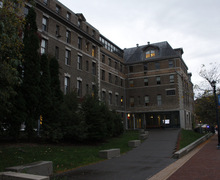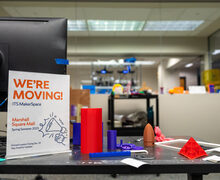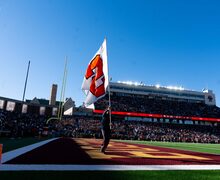Despite recent transportation changes, students should be patient with Centro
Corey Henry | Senior Staff Photographer
SU Parking and Transportation are offering alternate transit methods amid changes.
If you’ve ever ridden the subway in New York City, you know how crowded the trains can get. But that’s nothing compared to the bus to South Campus on a Monday at Syracuse University.
The bus system has been extremely unpredictable since students returned to campus this fall. Centro, the commuter service that provides SU students transportation, is currently facing a shortage of drivers. As a result they will no longer provide transportation on campus after 8 p.m.
SU’s Parking and Transportation Services at SU plan to supplement some of the absences with campus trolleys. Jennifer Horvath, the communications director with SU’s Parking and Transportation Services, provided some clarity regarding the changing bus schedule.
“Parking will expand the hours of its on-demand safety shuttle service to assist passengers traveling those routes from 8 p.m. to 6 a.m.,” she said in a statement to The Daily Orange. “The safety shuttle service can be requested by calling 315.443.RIDE (7433).”
Even if the bus does arrive on schedule, there is absolutely no promise they will have a spot on it because, since the buses have limited hours, the same amount of students need to fit on the few buses.
Russell Tom Sun, a junior and resident of South Campus, said he was concerned about the limited hours of the buses, specifically considering his late-night work schedule.
“I have to go to work at 9 p.m. and I don’t come home until almost 12 a.m. or 2 a.m.,” Tom Sun said. “It makes me nervous standing there isolated for long periods of time if I don’t know if anyone’s coming,” he said.
Tom Sun also said that he wouldn’t want to call SU’s Department of Public Safety or a safety escort shuttle every night because of how inconsistent the services can be. Other students have called Ubers or Lyfts if they can’t wait any longer for the bus, but these services become extremely expensive over time.
There needs to be a reliable transportation service for South Campus residents. But just as everything else in the world right now is being affected by the long-term ramifications of COVID-19, SU and Centro must be afforded pliability.
Steven Koegel, the vice president of communications & business planning at Centro, said that, unlike at SU, there are some places in the city of Syracuse that don’t have bus services at all. The job of a bus driver, particularly in the Syracuse City School District, is a recovering industry. Students have to appreciate these local bus drivers.
Drivers with Centro make $50,000 annually, including a matching 401k and paid training. Despite the benefits, the job of a bus driver is demanding, and it poses health concerns in a time when COVID-19 is still being transmitted on campus and around the city. It is hard to imagine the job description for being a Centro bus driver which includes having to repeatedly shepherd college students behind the yellow line.
Koegel said that, in order to keep drivers’ morale high, Centro aims to keep drivers motivated and hopeful. “Anytime there’s a shortage in the workforce, that’s a challenge, but I just tell them it’s a temporary situation and it will get back to the way it was before,” he said.
SU students need to have patience with Centro. Centro bus drivers who are stepping up to work longer hours deserve higher wages and a greater appreciation from those who ride their buses as SU and Centro seek to revive the transportation service that has left many students feeling like they cannot get around campus conveniently.
Sam Bova is a junior writing and rhetoric major. His column appears biweekly. He can be reached at sabova@syr.edu.
Published on September 14, 2021 at 9:11 pm






